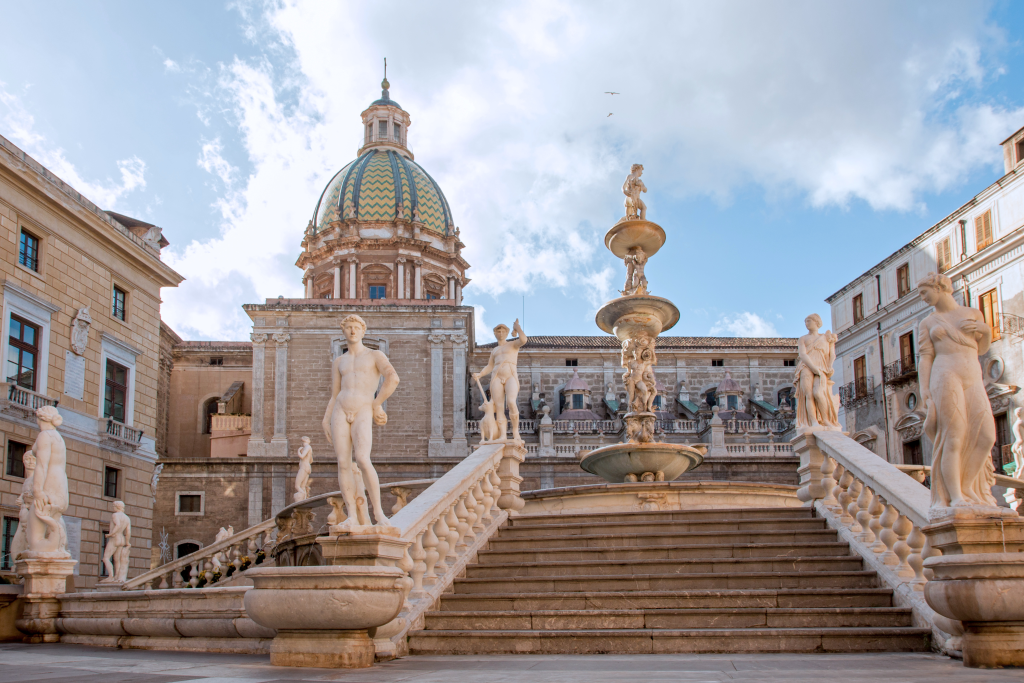
A Renaissance Gem in the Heart of Palermo
Just a short stroll from Piazza Quattro Canti, you’ll reach Piazza Pretoria, home to one of Palermo’s most iconic landmarks—Fontana Pretoria.
Often called the “Fountain of Shame,” this striking 16th-century sculpture offers a fascinating glimpse into Renaissance art, civic pride, and Palermo’s cultural identity. As you approach, its bold design and dramatic figures immediately draw attention.
The History of Fontana Pretoria
Originally crafted in the 1550s by Florentine sculptor Francesco Camilliani, the fountain was first placed in a private villa in Florence.
However, in 1573, the Senate of Palermo purchased the entire structure. It was carefully dismantled, shipped across the sea, and reassembled in Piazza Pretoria, directly in front of Palermo’s City Hall.
This relocation wasn’t just practical—it also symbolized the city’s growing ambition and love for classical beauty.
Why It’s Called the “Fountain of Shame”
When the fountain was unveiled, locals were genuinely shocked. Its many nude statues, portraying mythological gods, goddesses, and symbolic figures, didn’t align with Palermo’s conservative values at the time.
Consequently, the public began referring to it as Fontana della Vergogna—the Fountain of Shame. Despite the controversial nickname, the fountain became a lasting emblem of Renaissance expression and artistic courage.
Visiting Fontana Pretoria Today
Today, Fontana Pretoria stands as one of the most admired and photographed attractions in Palermo. Its exquisite carvings, artistic complexity, and historical backstory make it a highlight for any visitor interested in art, history, or architecture.
Conveniently located between Via Maqueda and Via Vittorio Emanuele, the fountain is surrounded by other stunning buildings and lively local streets.
Therefore, it’s the perfect spot to soak in Palermo’s unique blend of the past and the present.
Also nearby: Explore Palermo’s Arab-Norman architecture or visit the Palermo Cathedral for more cultural highlights.